
ASL Environmental Sciences is pleased to announce a new collaboration with Open Ocean Robotics, as part of the Air-Sea Ocean Monitoring System (ASOMS) project partially funded by Canada’s Ocean Supercluster. As part of this joint effort, ASL’s Acoustic Zooplankton Fish Profiler (AZFP) is being integrated into Open Ocean Robotics’ solar-powered surface vehicles to explore new possibilities in autonomous ocean monitoring.
The AZFP is a calibrated, scientific echosounder that is often deployed on moorings, providing a multifrequency time series lasting 12 months or longer. Combining ASL's AZFP with Open Ocean Robotics' innovative uncrewed platforms demonstrates a more efficient, environmentally friendly, and safer approach to collecting oceanographic data in diverse and remote marine environments.

ASL Environmental Sciences is proud to announce our new wide area satellite monitoring service called DeCAF, for Detection and Classification of Anomalous Features. DeCAF is a turnkey wide area monitoring service based on detecting and classifying changes in satellite imagery.
We are pleased to offer both:


As a company, we aim to provide scientists and resource managers with accessible, low-cost, and effective tools for studying marine ecosystems. Through collaborations with clients and researchers, we’re often introduced to emerging technologies that support these goals. Recently, we partnered with SOFAR Ocean and the Bristlemouth initiative to develop a real-time echosounder smart mooring—our first demonstration of satellite-transmitted, condensed AZFP data. Built using the Bristlemouth protocol for rapid underwater data and power transmission, the system is designed to be scalable.
To test the concept, we deployed the smart mooring at a kelp farm in Barkley Sound, operated by Tom Campbell of West Coast Kelp.

ASL Environmental Sciences Inc. is proud to announce Dr. Macarena Díaz-Astudillo as the recipient of the 2025 Early Career Scientist Award. Dr. Díaz-Astudillo’s innovative research proposal titled “Understanding the drivers of zooplankton layers and aggregations over two contrasting submarine canyons” was selected based on her well-organized research objectives, her previous knowledge and experience of using hydroacoustics and her careful considerations to carry out both the field and analytical elements of this study.
The award grants Dr. Díaz-Astudillo the use of ASL’s new Acoustic Zooplankton Fish Profiler AZFP-nano for a three-month period, along with full technical and analytical support from ASL’s expert team.


ASL’s Biological Oceanographer, Dr. Julek Chawarski, recently joined the University of British Columbia’s PRODIGY (Pacific Rim Ocean Data Mobilization and Technology) field school in Chilean Patagonia, supporting coastal oceanography and emerging technologies. Held at the San Ignacio del Huinay Foundation field station in Comau Fjord, the program brought together Canadian and Chilean graduate students to explore remote fjord ecosystems.
The trip began in Puerto Montt at the University of Los Lagos, where students learned about hyperspectral remote sensing with drones to detect harmful algae blooms. The group then traveled to Comau Fjord region to assemble oceanographic instruments and attend lectures on mooring design. Students gained hands-on experience with ASL’s AZFP-nano, a compact echosounder designed for use with CTD profilers, while Dr. Chawarski guided them in deploying the instrument and processing the data using custom algorithms.
One notable project, led by UVic master’s student Becky Brooks, used a kayak mounted AZFP-nano system to study the estuarine salt wedge in the Rio Lloncochaigua River. Becky’s research showed turbulent freshwater flows creating a strong scattering layer above rising saline tides.

ASL Environmental Sciences Inc. is proud to announce the successful completion of an initial multi-week study to measure tidal currents in collaboration with the Nunatsiavut Government and Oceans North. This
initiative aligns with the Nunatsiavut Energy Security Plan to explore clean, renewable energy solutions for coastal communities and reduce dependence on diesel-generated electricity.
Current transect surveys were initially carried out with Acoustic Doppler Current Profilers (ADCPs) over the broader study area. ADCPs were then deployed on moorings at three strategic locations within the
Rigolet Narrows waterway and recovered in September 2024. The data from this initial phase was used to inform the suitable site selection for a longer Phase 2 measurement period, which involves the
observational study of tidal currents to capture the full annual tidal cycle. The second phase deployment was completed in the fall and is scheduled for recovery in the summer of 2025.

ASL invites applications for the 2025 Early Career Scientist Award to win the use of the new AZFP-nano autonomous acoustic profiler for three months.
The goal of this program is to support early career trainees in the oceanographic and limnological research community by lending, free of charge, a calibrated battery-powered Acoustic Zooplankton Fish Profiler™ (AZFP™)-nano with a 200 kHz single beam transducer for a three-month period along with the technical and analytical support from ASL’s team of experts. This instrument loan program is open to early career scientists and engineers, graduate students, post-doctoral fellows and others involved in aquatic research.
The AZFP-nano is a newly developed, autonomous instrument that can gather backscatter data for scientists on a budget. The instrument comes with a 200 kHz narrow beam transducer that can be configured for various deployment types, including short-term moorings (one to two months) or as a continuous profiling instrument on a standard lowered oceanographic sensor package. Equipped with nine off-the-shelf D-cell batteries, it has enough power to ping every 10 seconds for a period of 30 days or provide over 150 hours of continuous one second profiling.


ASL is proud to announce the Acoustic Zooplankton Fish Profiler (AZFP)-nano to its family of advanced acoustic instruments for aquatic environments. This compact, lightweight, single frequency scientific echosounder is a miniaturized version of the AZFP and is well-suited for applications in challenging environments where size and weight are important considerations. This advanced profiler was developed to measure a wide range of physical and biological parameters including, zooplankton, fish, algae, bubbles and suspended sediments within the water column. The AZFP-nano has useful applications for fisheries sciences, oceanography and environmental monitoring and due to its compact design, the AZFP-nano can easily fit on AUVs, CTD rosette sampler and other instrument packages.
The unit uses nine common D-sized batteries with enough power for
multi-week deployments. The instrument comes factory calibrated with a 200 kHz transducer with other transducers soon to be added. In the summer of 2024, the AZFP-nano was part of an International climate research expedition off the southeast coast of Greenland where it was used to collect 14 kilometers of water column data in a study focused on glacial-ocean interactions.

ASL Environmental Sciences Inc. is proud to honor and celebrate our most esteemed collaborator, whose unwavering partnership has been instrumental in our company story. DFO scientist Dr. Humfrey Melling was recently recognized for his significant contributions to Arctic oceanography and sea ice processes. In a ceremony held at the Institute of Ocean Sciences and co-hosted by the Canadian Meteorological and Oceanographic Society (CMOS), Dr. Melling was presented with a certificate bearing the title: Fellow of the Canadian Meteorological and Oceanographic Society (CMOS) “for fundamental contributions to advancing our knowledge of Arctic oceanography and sea ice processes, over the past forty-five years.”
“Thank you for the many ice related scientific insights, the thoroughness of the ice profiling sonar data processing and general scientific collaborations. The Ice Profiling Sonar has been a bigger success with your involvement over the years.” (Jan Buermans, ASL President)

ASL Environmental Sciences Inc. is pleased to announce that it has recently completed a research and development subcontract from Gavin & Doherty Geosolutions Ltd., a subsiduary of Venterra Group PLC as part of a metocean data needs and gap assessment for the development of offshore wind projects in Atlantic Canada for Natural Resources Canada. ASL was selected as a subcontractor for its 45 years+ of expertise in sea ice, ice bergs, and freezing spray accretion as well as a history of delivering successful metocean-ice studies to clients.
The primary objective of the work is to identify all types of metocean data needed to enable successful offshore wind project development in Atlantic Canada. Following a review of existing datasets, and a dataset gap analysis, we will be making recommendations for specific appropriate measures to collect necessary datasets. The analysis focuses on Nova Scotia and Newfoundland and Labrador, where near-term offshore wind development is more likely.


ASL’s Biological Oceanographer, Dr. Julek Chawarski, successfully completed a research expedition to the glacial fjords along the southeast coast of Greenland, near the Ammassalik Archipelago. Aboard the 16-meter research sailboat Atka, the team focused on glacial–ocean interactions in a region rarely explored by research vessels. While most studies in the area concentrate on the massive Sermilik fjord system, home to the Helheim Glacier, the Atka's crew of five, including two scientists, conducted pioneering research in the surrounding, understudied fjords.
Julek, collaborating with a team of scientists from Stockholm University, aimed to investigate the heat flux of Atlantic water from the Irminger Sea and its impact on the melting of smaller outlet glaciers along the coastline. The region's unusually heavy ice conditions and storm activity delayed the Atka in Reykjavik for two weeks before it could embark on a challenging crossing of the Denmark Strait. The vessel finally arrived in Tasiilaq on August 9th, and the team proceeded to navigate narrow coastal waters to reach ice-free fjords in the Ikertivaq region.

ASL is pleased to announce that it has recently completed a six-month metocean survey for FortisBC Energy Inc. as part of its ongoing operations and maintenance activities supporting its stewardship of the Vancouver Island Transmission System which supplies natural gas to Vancouver Island and the Sunshine Coast. Wave buoys and subsea current profilers were deployed from December 2023 to June 2024, with a mid-program servicing trip in March 2024. All subsea equipment and wave buoy mooring anchors were successfully recovered, with full recovery of all datasets.
The field program measured directional waves and subsea currents at six individual moorings deployed at three strategic locations along the pipeline route in the Strait of Georgia near Powell River, BC and Texada Island. These measurements utilized ASL’s new PBM-15 polyethylene deepwater buoys to support data collection in water depth of up to 400 m. The datasets collected from this program will be used in numerical modeling studies to support pipeline spanning and integrity assessment at various locations, to be conducted by Worley and RPS, a Tetra Tech Company.

ASL Environmental Sciences Inc. (ASL) and Edgewise Environmental Consultancy Ltd. (Edgewise) have partnered to offer the North American offshore marine energy sector a comprehensive full-service team of ocean specialists. With a cumulative 60+ years of ocean experience and extensive on-water experience on all three of Canada’s coastlines, we strive to deliver innovative multidisciplinary solutions for your marine energy project needs.
• Comprehensive physical oceanography studies
• Sea ice studies
• Biological oceanography studies
• Marine mammal and seabird observation
• Passive acoustic monitoring (PAM)
• Environmental Training

ASL Environmental Sciences Inc. congratulates its own, Dr. Matthew Asplin on his recent election to the Marine Renewables Canada Board of Directors to a three-year term (2023 – 2026). We also wish to extend our sincere congratulations to the other newly elected members and wish them all the best in working together to push Marine Renewable Energy projects forward in Canada!
Marine Renewables Canada is the national association for tidal, offshore wind, wave and river current energy, representing a membership of technology and project developers, suppliers, utilities, Indigenous organizations, researchers, and communities. Marine Renewables Canada’s mission is “To champion Canada’s growing marine renewable energy sector through advocacy, engagement, and education and expand market opportunities across the country and globally.”
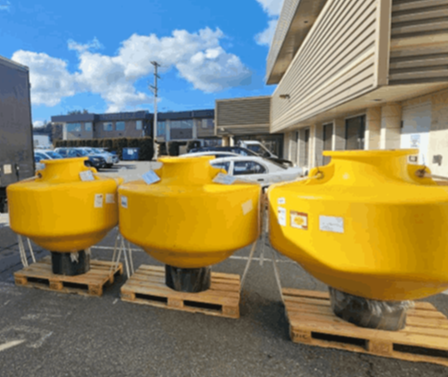
ASL is pleased to announce that it has recently acquired three Mesemar PBM-15 Polyethylene buoys for a major metocean study we are undertaking for a client project. These buoys are designed to the International Association of Marine Aids to Navigation and Lighthouse Authorities (IALA) recommendations and are made from high-quality rotomoulded virgin polyethylene, filled with closed-cell expanded polyurethane foam. These are very suitable for deep-water sites where extreme weather requires a more robust buoy for metocean data collection. They feature the ability to add an internal ballast weight for greater stability and high shock resistance.
Following their successful recovery in the spring of 2024, we plan to add these to our lease pool to offer to future clients, especially for measuring directional waves in offshore environments to support the development of offshore wind farms and other marine renewable energy projects where stable, reliable data collection over extended periods is required.
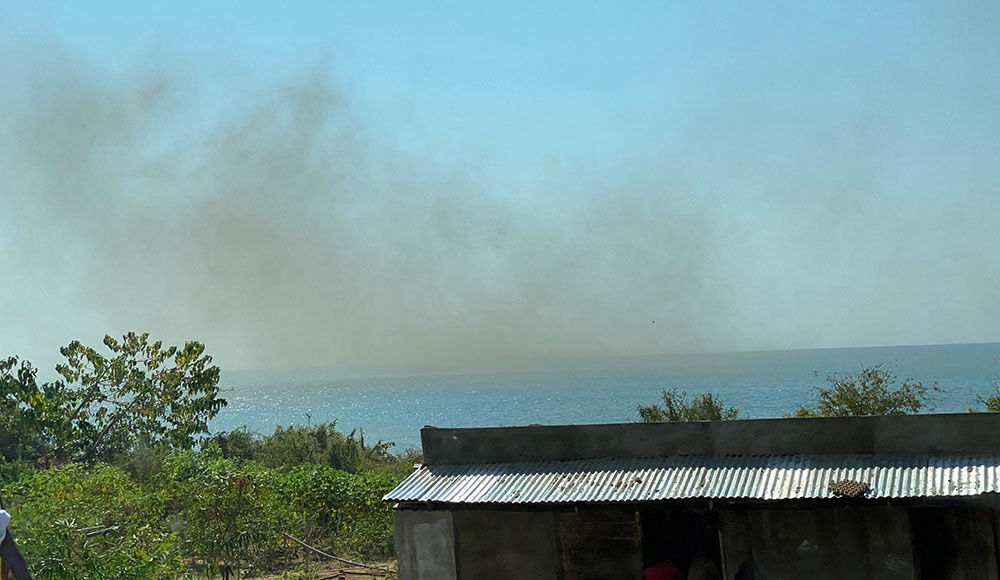

Dr. Philip Matthews, Associate Professor in the Department of Zoology at the University of British Columbia and winner of the 2023 annual Acoustic Zooplankton Fish Profiler (AZFP) award, and Dr Maxon Ngochera, Chief Fisheries Research Officer, Malawi, have now completed their field work. This work centered on examining the unmatched diel migration of the aquatic larvae of the Chaoborus edulis, a midge fly that is abundant in Lake Malawi, East Africa.
The goal of this research was to use ASL’s multifrequency AZFP to better understand the physiology and ecology of Chaoborus edulis larvae, the deepest free-diving insects in the world. The AZFP revealed that these aquatic midge larvae dive 200 m into the hypoxic zone of the lake during the day to avoid fish predation.
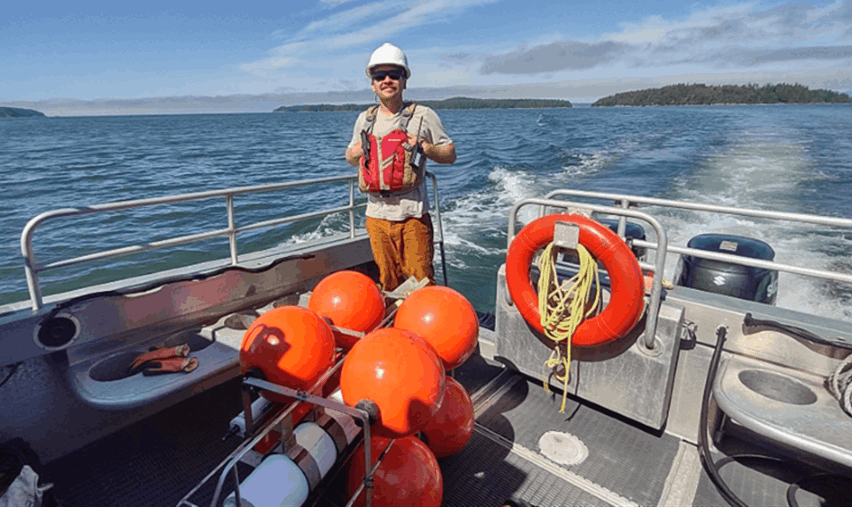
Every year Bamfield Marine Sciences Centre (BMSC), located on the west side of Vancouver Island, British Columbia, offers world-class, university-level courses on a variety of topics including biological oceanography. This summer this course was taught by Dr. Jennifer Putland and Dr. Louis St. Laurent of the University of Washington. As part of the course, ASL staff member Julek Chawarski was invited to teach students about hydroacoustics and how to analyze complex oceanographic data. Prior to this course an ASL Acoustic Zooplankton Fish Profiler (AZFP) was deployed to collect data on krill and fish in the Barkley Sound area.

ASL is pleased to announce that we have entered into a product sales agreement with ANB Sensors of Cambridge United Kingdom. ANB Sensors have developed a next generation calibration-free, solid-state, multi-parameter pH, conductivity and temperature sensor. Unlike other pH sensors that require frequent re-calibration, the ANB sensors uses a patented technology that automatically carries out in-situ calibrations throughout the deployment. These sensors can be deployed individually or integrated into underwater vehicles, sondes or monitoring platforms using the optional dedicated integration kit. There are four available options for operating at 5 m, 50 m, 300 m or 1250 m depths. They are suitable for freshwater, saltwater and aquaculture appliactions and are designed to electrochemically inhibit the formation of biofilms.
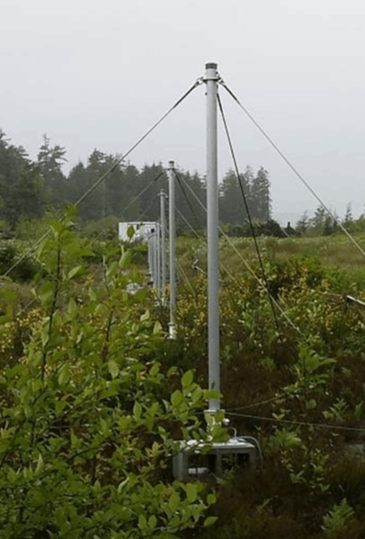
The topic of surveillance of civil off-shore infrastructure is increasingly becoming a significant issue globally. In response to this, WERA has provided an upgrade to its High Frequency ocean radar system to monitor ship activities far behind the horizon.
Several “WERA” ocean radar systems are located on the European coastline as well as the East and West Coasts of North America. The systems located at the German Bight, the Dutch North Sea coast, and the French and Italian Coasts are particularly well suited for this technical application of ship detection.
The WERA ocean radar, represented in Canada by ASL Environmental Sciences, is classified as a “dual-use” system because it is suited for oceanographic applications as well as over-the-horizon ship detection and tracking. It can be used for the surveillance of very large areas of the coastal ocean to identify suspicious ship manoeuvres. This technology should be of interest to all countries with infrastructure on their coast.

ASL is pleased to announce the addition of the Sofar Spotter metocean buoy to its oceanographic equipment product sales lineup. This complements the already growing broad range of innovative equipment offered by the ASL, DASCO Equipment Inc. partnership.
The Sofar Spotter metocean buoy (Figure 1) provides real-time wave, wind, sea surface temperature and barometric pressure from a compact, solar powered, rugged designed buoy built to withstand the harshest conditions of the open ocean. With 24/7 satellite and cellular connectivity, real-time data can be collected from anywhere in the world and displayed via Sofar Spotter’s dashboard and API. The buoy is affordable, compact and portable weighing only 7.45 kg and is about the size of a basketball.
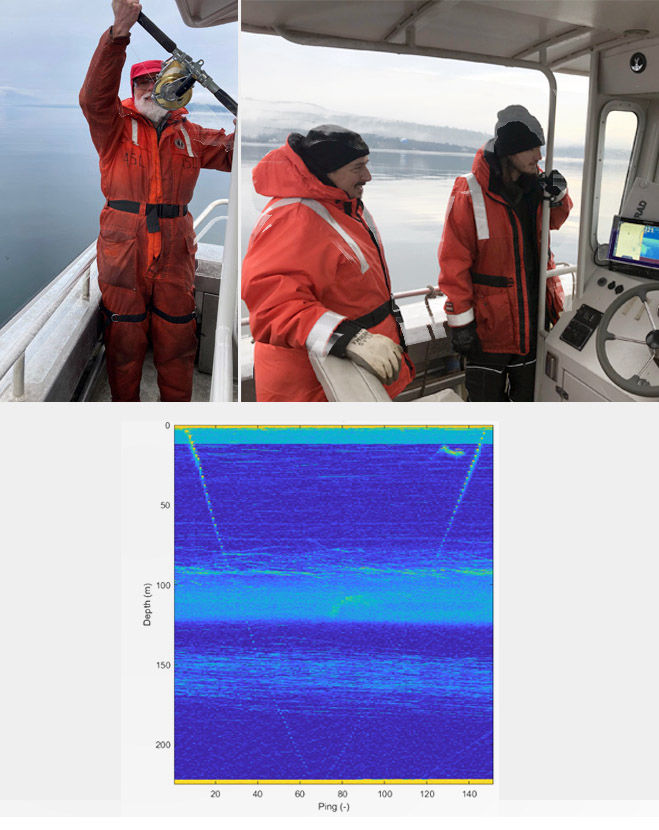
ASL Environmental Sciences is pleased to announce the successful field trials of a new prototype split-beam sonar. The trials were conducted in the Saanich Inlet near the Institute of Ocean Sciences (IOS), Sidney, BC. This milestone marks the first such deployment of the prototype instrument, as part of a collaboration between researchers at Memorial University, the Department of Fisheries and Oceans Canada (DFO), and ASL. The field testing was done from a small IOS launch with Dr. Stéphane Gauthier, Fisheries and Oceans research scientist, Dr. Len Zedel, Professor and Department Head of Physics and Physical Oceanography at Memorial University, and graduate student Axel Belgarde, also of Memorial University. ASL staff members Dr. Steve Pearce and Graeme Thompson participated in the study.
Split-beam echosounders use multiple receive channels to determine target location within the acoustical beam. Unlike ordinary single-beam echosounders, split-beam echosounders may determine not only the range but also the direction of arrival of incoming signals. This facilitates accurate measurements of target strength. When detecting fish over multiple pings, a split beam sonar may track the fish and estimate its swimming speed and direction.

ASL AQFlow is pleased to announce that our Acoustic Scintillation Flow Meter (ASFM) is being used by the Compagnie Nationale du Rhône (CNR) to conduct flow measurements at the Beaucaire Hydropower Plant on the Rhône River in France as part of an electrical production optimization program. This site generates approximately 210 MW of hydroelectricity from six bulb turbines. Figure 1 shows the instrumented frame that is lowered into the hydroelectric plant intake to the turbine and is equipped with an ASFM array that measures flow across 30 paths. Prior to this installation, the ASFM was successfully deployed at the Châteauneuf-du-Rhône, Montélimar-Henri-Poincaré- hydroelectric plant, another of CNR’s facilities on the Rhône River. The quality of the data collected at this site was considered very high and results were repeatable with an average uncertainty of roughly 0.4%.

The Vancouver Island CMOS Centre and ASL co-hosted a reception and award presentation ceremony at the University of Victoria, University Club, Thursday October 6th to honour those that have contributed significant scientific achievements. At this ceremony, ASL’s David Fissel was named a Fellow of the Canadian Meteorological and Oceanographic Society (CMOS).
David Fissel was educated at the University of British Columbia, earning a B.Sc. in Honours Physics in 1971 and an M.Sc. in Physical Oceanography in 1975. His graduate research, carried out under Professor Steve Pond, was followed, in 1975, by working as a Physical Oceanographer at the Government of Canada’s Institute of Ocean Sciences. His initial studies focused on currents in the Strait of Juan de Fuca and circulation patterns in the eastern half of the Northwest Passage.

ASL is excited to announce Amanda Dash's appointment to the Machine Learning and Computer Vision Specialist position as a part of our team. She contributes over five years of experience in research in Machine and Deep Learning and over a decade of software engineering and development. Amanda will be bringing her expertise to various projects at ASL.
Before her appointment at ASL, Amanda completed a Computer Engineering Technologist diploma at Saskatchewan Polytechnique and a Bachelor of Software Engineering at the University of Victoria. She has published research on bird population estimates, video summarization, classification and segmentation of images during her studies. Additionally, her studies have taken her to Beijing, China and Iqaluit, Nunavut, on various internships.

ASL Environmental Sciences is pleased to announce Dr. Philip Matthews as the winner of the sixth annual Acoustic Zooplankton Fish Profiler (AZFP) early career scientist award contest.
Dr. Matthews is an Associate Professor in the Department of Zoology at the University of British Columbia (UBC) and runs the Comparative Respiratory Physiology and Biomechanics laboratory.
Dr. Matthews will be using a multi-frequency AZFP to understand the physiology and ecology of the deepest diving insect in the world—the Chaoborus edulis of Lake Malawi in southeastern Africa. He will be leading a team of two UBC graduate students, a fisheries research officer from Malawi and a UBC associate professor.
Lake Malawi is recognized as being rich in fish biodiversity with its waters teeming with more fish species than any other lake in the world. This lake is also home to Chaoborus edulis, remarkable Malawian midges that number in the billions and that regularly erupt from the lake surface forming vast twisting clouds that extend hundreds of meters above the lake.

ASL is pleased to announce the appointment of Mitchell Bonney to the position of Remote Sensing Scientist as part of our remote sensing team. Before joining ASL, Mitchell had been serving as a limited term Assistant Professor (Teaching Stream) at the University of Toronto Mississauga (UTM), where he taught courses in remote sensing and spatial statistics. Mitchell completed his Doctoral degree at UTM earlier this year, and in 2017 completed his Master of Science at Queen’s University (Kingston), both in Physical Geography with a specialty in remote sensing.
Mitchell is passionate about applying remote sensing to answer environmental questions, having utilized multispectral satellite and aerial time-series to explore northern Canada climate-induced shrubification, Australian fire history, temperate forest growth-decline dynamics, and southern Ontario urban forest histories in comparison with social-demographic change. Mitchell has published his work in high-quality scientific journals, including Remote Sensing of Environment.

ASL is pleased to announce the appointment of Dan Walters to the position of Data Scientist as part of our remote sensing team. Dan previously served 20 years in the Royal Canadian Air Force (RCAF) as a pilot before leaving to join the civil sector. He holds a Bachelor of Science in Honours Physics and a Master of Defence Studies from the Royal Military College of Canada. Most recently he completed a Master of Science in Aeronautics and Astronautics from Purdue University. Dan is an avid astrophysicist, with published papers in both dynamics and astronomy. Notably, he created a deep learning tool to help unravel the mysteries of galactic evolution. Dan brings a wide breadth of experience with the military, academia, and personal research and is eager to join the team.

ASL would like to congratulate all of the participants in the Vancouver Island Regional Science Fair and would like to recognize those that went on to receive recognition at the 2022 Canada-Wide Science Fair.
In April, ASL was proud to sponsor the fourth-prize winner of the Vancouver Island Regional Science Fair. This prize was awarded to Nathan Hellner-Mestelman for his project entitled “Breakup is a Drag - Using a Lower CubeSat Orbit to Protect Space Infrastructure,” a study on how to reduce space debris by adjusting satellite orbits using a cost-efficient delivery system. Nathan, along with six other Vancouver Islanders (see results virsf.ca) were selected to continue on to the nationals.
Vancouver Islanders Nathan Hellner-Mestelman, Evan Papps, Katherine Morley and Eunio An all won awards at the Canada-Wide Science Fair.

ASL is pleased to announce the appointment of Devin Ireson to the position of Software Developer and IT Specialist. Devin brings over a decade of experience as an IT systems analyst to ASL, along with a recently completed B.Sc. in Computer Science. He will be responsible for support of ASL’s IT infrastructure and to design, test, code, analyze, and maintain software programs and applications.
Devin recently earned his Bachelor of Computer Science degree with a specialty in software systems from the University of Victoria, the culmination of an educational journey that began with the laddered part-time computing program at BCIT.
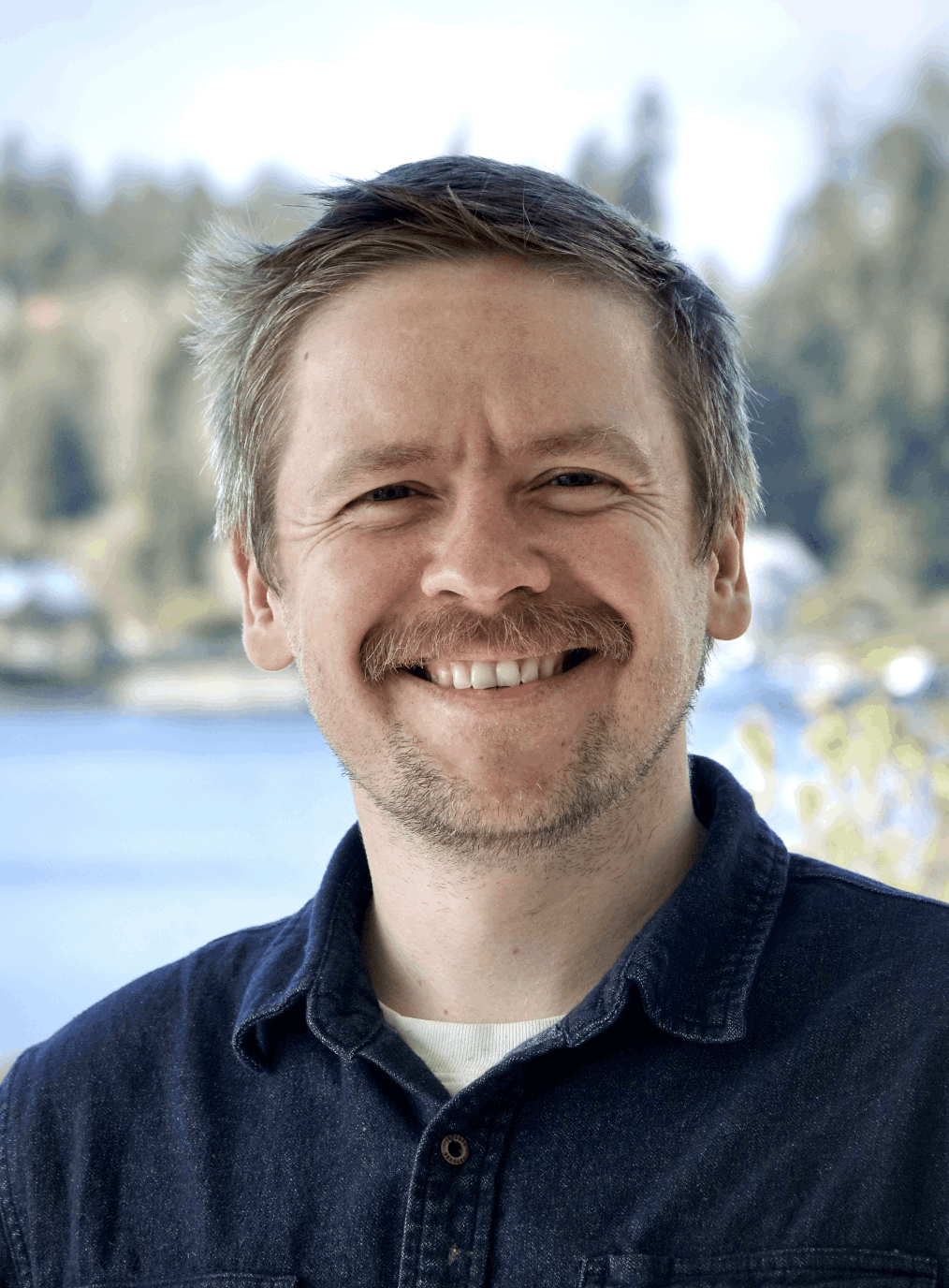
ASL is excited to announce the appointment of Julek Chawarski to the position of Biological Oceanographer as a part of our team. Julek contributes nearly a decade of experience in fisheries science, with expertise in forage fisheries and biological oceanography in coastal and deep ocean ecosystems. He will be responsible for developing consulting services for our ocean monitoring clients and will develop new tools for hydroacoustic studies of aquatic ecosystems.
Previous to his appointment at ASL, Julek completed a Masters in Marine Biology at the University of Maine. During his studies he designed experiments to investigate the effects of marine protected areas (MPAs) on the recovery of groundfish stocks in the Gulf of Maine. He trained in acoustic analysis and provided new insights into the spatial distribution of herring spawning in inshore waters of Maine. Soon after completing his Masters, Julek attended Memorial University of Newfoundland where he is currently completing his doctorate in Fisheries Science.
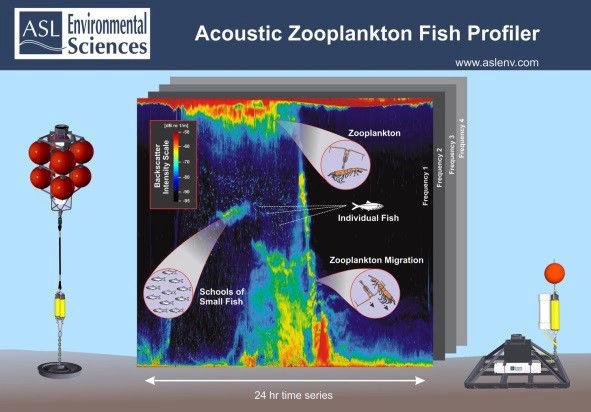
The goal of this program is to support the oceanographic and limnological research community by lending, free of charge, a calibrated battery-powered Acoustic Zooplankton Fish Profiler™ (AZFP™) (either 125/200/455/769 kHz or 38/125/200/455 kHz configuration), plus mooring cage and battery for a three-month maximum deployment period along with the support from ASL’s team of experts. This instrument loan program is open to early-career scientists and engineers, graduate students, post-doctoral fellows and others involved in oceanographic or freshwater work.

A prototype of the AZFP-ice was deployed in the coastal waters approximately 40 km east of the town of Nain, Labrador, an area used for Indigenous traditional hunting and fishing. This deployment was carried out by ASL in collaboration with the Inuit Nunatsiavut Government in October 2021 and will be recovered in the fall of 2022. The AZFP-ice combines the technology of the Ice Profiling Sonar (IPS) with its ability to detect ice draft along with the calibrated Acoustic Zooplankton Fish Profiler (AZFP) echosounder to examine zooplankton, fish, bubbles and suspended sediments within the water column.
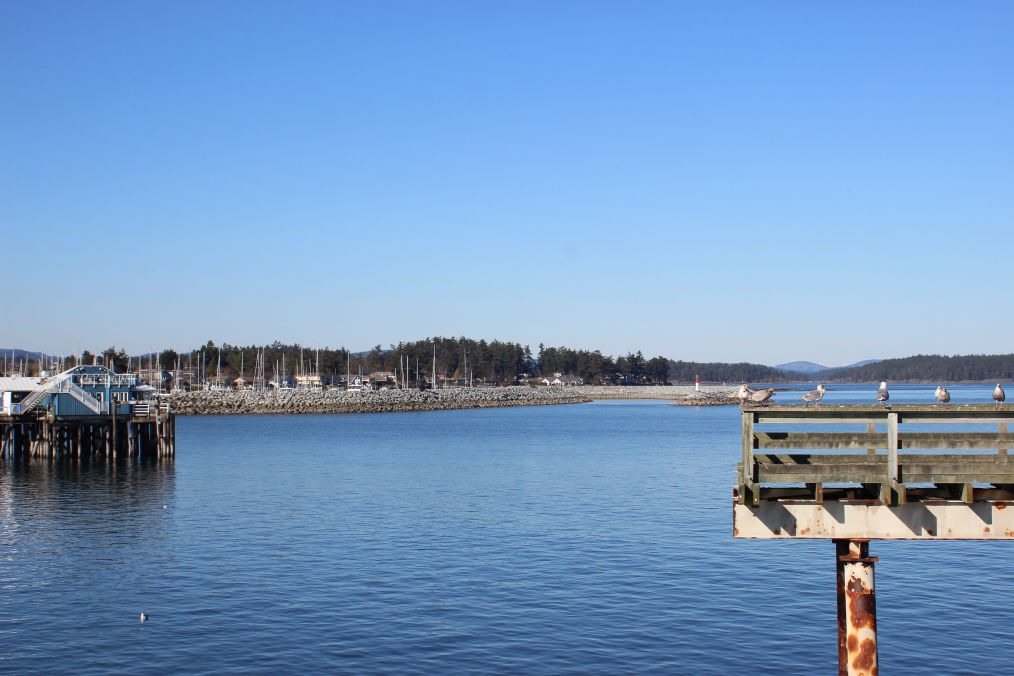
Westcoast Oceanography Inc. (operating as ASL Environmental Sciences Inc.) is pleased to announce that it was recently awarded a research and development contract ($167,989.91) through the Innovative Solutions Canada (ISC) program to develop a proof of feasibility for Public Services and Procurement Canada, in response to the Canadian Coastal Zone Information System (CCZIS) challenge. ASL has partnered with Trailmark Systems Inc. of Victoria, B.C. to develop a proof of feasibility that will showcase a robust, interoperable, and user-friendly web-based geographic information system. Our two companies will collaborate to develop a detailed report, outlining how a functional prototype would address the goals outlined in the ISC challenge.

The acoustic scintillation method for measuring turbine discharge, used by ASL AQFlow’s Acoustic Scintillation Flow Meter (ASFM) has been mentioned in the latest American Society of Mechanical Engineers Performance Test Code (ASME PTC 18-2020) for Hydraulic Turbines and Pump-Turbines. Although the method has not yet been adopted into code, it is being evaluated for future code releases. Acoustic scintillation is considered to be a permissible technique to measure hydroelectric turbine discharge when those testing understand and agree on its use, or use this technique in conjunction with a code-approved method. A detailed explanation of how the method works and guidance on its use appears in the nonmandatory appendix C section of this code document.

ASL Environmental Sciences is pleased to announce the combining of our Acoustic Zooplankton Fish Profiler (AZFP) with our Ice Profiling Sonar (IPS) to provide a comprehensive solution for ice thickness detection and water column profiling of fish, zooplankton, bubbles and suspended sediments in ice-infested waters. The AZFP-ice is the next generation in high resolution, low power, continuous recording subsurface instruments that are capable of long-term deployments of a year or more.
Built into the ice profiling sensor is a logarithmic detector which resolves both strong and weak acoustic targets. In practice, this means that the signal from strong reflections such as the water–air interface at close range doesn’t saturate, and weak targets such as the water–ice interface at long range are still measurable.

Once abundant throughout the North Atlantic, the North Atlantic right whale population has been reduced to fewer than 360 individuals and has been designated by the International Union for the Conservation of Nature as a critically endangered species. During the whaling era, these whales were exploited by the thousands for their plentiful oil and baleen. Now they face new challenges of ocean regime shifts linked to human-induced climate change. In the Gulf of Maine and the Scotian shelf regions, these regime shifts have resulted in less favorable foraging environments for the right whales.
To investigate the impact of these ocean regime shifts on the North Atlantic right whale, Kimberley Davies and her team from the University of New Brunswick along with collaborators that include the New England Aquarium, the Canadian Whale Institute, Dalhousie University and snow crab fishers in the Gulf of St Lawrence, have been deploying ASL’s Acoustic Zooplankton Fish Profiler (AZFP).
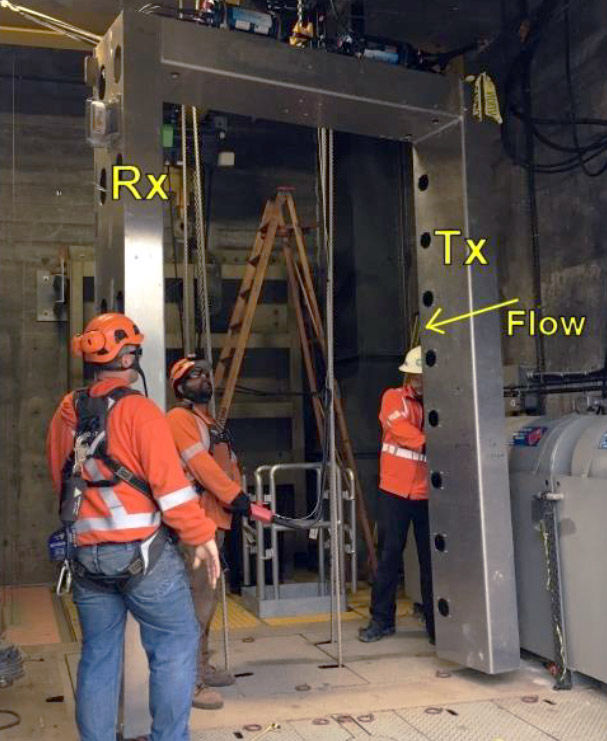
ASL AQFlow’s Acoustic Scintillation Flow Meter (ASFM) has been installed at the BC Hydro’s Wahleach project near Hope, BC, as a replacement to an existing Over-Velocity Detection System (OVDS). Hydroelectric operations use these detection systems in order to detect if the tunnel or penstock downstream of the intake has a leak or rupture. In such cases, intake gates are closed to prevent uncontrolled release of water that can be potentially dangerous for the public and may cause damage to properties and infrastructure.
The ASFM uses ultrasonic pulses across an intake to analyze variations in turbulence to measure flow. These data are used to produce real-time current velocities and discharge volumes. At the Wahleach site, two independent 4-path ASFM instruments—acoustic beams consisting of transmitter (Tx) and receiver (Rx) pairs—were mounted to a removable frame that was lowered into an intake slot. ...


The Ice Profiling Sonar (IPS) is an example of an Upward-Looking Sonar (ULS) that provides continuous (1-2 Hz), high-resolution (1 cm vertical, ~1 m horizontal) measurement of ice draft. ASL has recently completed a second field test of a prototype IPS with a logarithmic detector module, the IPS5L. The IPS5L was deployed in seasonally ice-covered waters near Nain, Labrador in collaboration with the Nunatsiavut Government via a through-ice deployment from February - October 2020 ...
Click here to view the presentation.

On June 10, 2021, Canada’s Ocean Supercluster announced four new projects with a total value of over $3.5 million, including the Real-time Bubble Diffuser Aeration Entrainment Monitor Project. This BC-led project will develop a real-time entrainment monitoring system for aquaculture fish farms in complex coastal ocean environments.
The Real-time Bubble Diffuser Aeration Entrainment Monitor Project is led by ASL Environmental Sciences, who will develop services and products for the installation and maintenance.
Click here to see video of Canada's Ocean Supercluster project announcement.
In recognition of the importance of the Pacific herring, the Salish Sea Community Guardians, an organization dedicated to all aspects of stewardship for Salish Seas First Nations, have created a cross-cultural action plan. This action plan would provide First Nations traditional herring spawning habitat recovery and protection in key herring spawning areas in waters around southern Vancouver Island. Part of this action plan involves the construction of two types of habitat curtains suspended below floating docks and log booms. These curtains, made from either synthetic materials or hemlock and cedar branches, provide ideal spawning sites for the depositing of herring eggs.
ASL Environmental Sciences Inc., in collaboration with the Salish Sea Community Guardians, deployed an Acoustic Zooplankton Fish Profiler (AZFP) on March 17, 2021. This multi-frequency echosounder was placed in a traditional herring spawning location in Saanichton Bay near Victoria B.C.
(Drone footage supplied by Geoff Mullins, GKM Research)

ASL Environmental Sciences Inc. is pleased to announce its product distribution and service partnership with DASCO Equipment Inc. DASCO is the Canadian representative for several leading international ocean technology manufacturers, most notably Teledyne Marine and has predominantly operated in eastern Canada. ASL is a leading manufacturer and service firm in the ocean technology and oceanographic marketplace with its head office in Greater Victoria, BC. With this partnership, clients have access to over 75 years of oceanographic experience offering a complete range of oceanographic instruments and services under one umbrella. Here are some of the organizations that this partnership represents.

Biofouling in marine environments is one of the primary limiting factors that will determine the deployment duration of platforms and instrumentation and dictate the service schedule that is required. ClearSignal, manufactured by Severn Marine Technologies, is a clear, non-toxic coating, that resists biofouling. The product acts as a durable, permanent, foul-release coating that is designed to last the life of the equipment it is protecting. Its effectiveness is a result of the non-stick properties of the materials in the proprietary coating. Unlike traditional antifouling systems which rely on active biocides and whose effectiveness degrades with time, ClearSignal retains its effectiveness over time.

An international team of scientists led by Dr. Giulia Castellani of the Alfred Wegener Institute (AWI) and Dr. Jeremy Wilkinson of the British Antarctic Survey (BAS) have developed a project called EcoLight which uses an Autonomous Biological Echo Sounding Buoy (ABES) to continuously measure changes in the light field and associated biological responses under sea ice. The buoy is designed to be frozen into the ice and drift for deployment periods of one to two years collecting data on a pan-Arctic scale.

The University of Victoria Ph.D. candidate Rhonda Reidy has recently received funding for her project “Modifying an Acoustic Zooplankton and Fish Profiler for quantitative spatial sampling of baleen whale prey in British Columbia”, co-supervised by Dr. Laura Cowen and Dr. Stephane Gauthier. This funding comes from an NSERC Alliance grant awarded to Laura Cowen.Reidy studies baleen whale foraging dynamics. North Pacific humpback whales, in particular, are increasing in abundance and, in BC, are increasingly struck by vessels and entangled in fishing gear. New tools are required to observe their interactions including collecting data on the humpback whale diet. The goal of a partnership between Reidy and ASL Environmental Sciences (ASL) is to collaborate on a modified ASL Acoustic Zooplankton and Fish Profiler (AZFP).

Over the last three years, ASL Environmental Sciences has provided data loggers to a study being conducted at Swan Lake in Victoria, BC. In an ongoing monitoring program, Rob Bowen of Diversified Scientific Solutions has been looking at the relationships between dissolved oxygen, nutrients and cyanobacteria blooms.
The explanatory power of combining DO loggers, the AZFP with its ability to track position and abundance of cyanobacteria, as well as nutrient testing, gives valuable insights into the dynamics that led up to this fish kill, a problem that’s on the rise globally.

Marine Polar Ecosystem Research is challenging due to the remoteness of the study areas and the presence of sea ice, impeding ship operations, throughout most of the year. Because of this, basic scientific understandings of the ecosystem in Polar areas has lagged that of more temperate and tropical waters. In these areas, especially in the Arctic, the physical and biological regimes are changing faster than all other portions of the world’s oceans. As the physical regime changes, e.g. regional air temperatures increase and sea ice retreats, there are major impacts on the biological regime, most notably in the introduction of invasive species and the threats to natural species, due to habitat changes, up to and including the iconic polar bear species.
Read full article:
Digital magazine format
Mobile friendly format

ASL Environmental Sciences is pleased to announce Dannielle Eager as the winner of the fifth annual Acoustic Zooplankton Fish Profiler (AZFP) early career scientist award contest. Dannielle is presently studying at the University of Plymouth at Devon, UK at a postgraduate level in the school of Biological and Marine Science.
Dannielle’s research will focus on the influence of dynamic seamount oceanography on pelagic biota in the tropical Indian Ocean, with support from the Garfield Weston Foundation, Bertarelli Foundation and the University of the Highlands and Islands.

ASL Environmental Sciences (ASL) was chosen by Hemmera Envirochem Inc. and the Vancouver Fraser Port Authority (port authority) to perform a hydroacoustic study of eulachon fish (Thaleichthys pacificus) distribution in the vicinity of Deltaport Terminals off the mouth of the Fraser River, BC. To support the development of the Dredging and Sediment Discharge Plan that will form part of the Construction Environmental Management Plan of the Roberts Bank Terminal 2 Project (project), the port authority has committed to developing eulachon-specific mitigation that will be used during dredging activities. A pilot study was developed to examine the efficacy of hydroacoustic techniques in detecting adult eulachon.

Online May 4-8 2020
In this presentation, waves in sea ice were examined using spectral analysis. Data for this study were collected over a four year period at two sites located in the Chukchi Sea. Wave height, frequency, steepness, period and attenuation were used to consider linear and nonlinear processes.

May 2020
The goal of this program is to support the oceanographic and limnological research community by lending, free of charge, a calibrated battery-powered Acoustic Zooplankton Fish Profiler™ (AZFP™) (either 125/200/455/769 kHz or 38/125/200/455 kHz configuration), plus mooring cage and battery for a three-month maximum deployment period along with the support from ASL’s team of experts. This instrument loan program is open to early-career scientists and engineers, graduate students, post-doctoral fellows and others involved in oceanographic or freshwater work.
To apply to this program, send a summary proposal (maximum length four pages) of your study and description on how it would benefit from the use of the AZFP's capabilities. CVs and letters of support are acceptable in addition to the four-page proposal. See full details by reading link to the press release below.

May 2020
In a collaborative effort with the Nunatsiavut Government and Dalhousie University to measure ice, water current and other physical and biological properties of the marine environment, ASL Environmental Sciences Inc. contributed a prototype Log Ice Profiling Sonar (LogIPS), and on February 15th 2020, the sonar was deployed on a taut-line mooring in the waters off Nain, Nunatsiavut, Labrador. The mooring also contained an acoustic doppler current profiler (ADCP) as well as data loggers for chlorophyll, turbidity, temperature-salinity and dissolved oxygen. The mooring was deployed through a hole cut in the sea ice, with an open-water recovery planned for later this year.
The deployment was part of a project run by the Nunatsiavut Government to collect information about the sea ice environment on the Labrador coast using a variety of data sources and multimedia communication tools.

April 2020
In 2019, Dr. Laura Hobbs (University of Strathclyde and Scottish Association for Marine Science) and Dr. Roland Proud (University of St. Andrews) won the ASL Environmental Sciences annual early career scientist competition to obtain, free of charge, an Acoustic Zooplankton Fish Profiler (AZFP) to study fisheries ecology in Lake Victoria (East Africa). As was proposed, the instrument was deployed in the deepest part of the lake (c. 70 m of water depth) on the 30th November 2019.
Dr. Proud and Prof. Andrew Brierley (University of St. Andrews) returned to Uganda in February 2020 to recover the AZFP. As part of the instrument recovery trip, Dr. Proud and Prof. Brierley ran an acoustics course with 20 fisheries scientists from the Lake Victoria Fisheries Organisation (LVFO, Uganda), Tanzania Fisheries Research Institute (TaFIRI, Tanzania), Kenya Marine and Fisheries Research Institute (KMFRI, Kenya), and the National Fisheries Resources Research Institute (NaFiRRI, Uganda).
December 2019
ASL Environmental Sciences (ASL) in Victoria, British Columbia, Canada has, following a tender process, entered into a contract with the Ministry of Mineral Resources, Government of Greenland. Under this contract ASL will process and analyze a large amount of airborne hyperspectral data in order to produce mineral maps for the Gardar Province in south Greenland.

November 2019 (article as it appears in the Journal of Ocean Technology 2019)
ASL Environmental Sciences Inc. (ASL), University of Victoria, and the Department of Fisheries and Oceans (DFO) recently completed the first phase of a collaborative research initiative to develop automated analysis tools for data collected by ASL’s multi-frequency echosounder, the AZFP (Acoustic Zooplankton Fish Profiler). This phase of the research was funded by the Natural Sciences and Engineering Research Council (NSERC) through an Engage Grant. Following very promising results, the second phase of this initiative, co-funded by ASL and the NSERC Engage Plus Program, is now underway.

September 2019
ASL Environmental Sciences is pleased to announce Dr. Laura Hobbs and Dr. Roland Proud as winners of the fourth annual Acoustic Zooplankton Fish Profiler (AZFP) early career scientist award contest. They are both Scotland-based marine ecologists, specialising in bioacoustics. Dr. Hobbs is associated with the Scottish Association for Marine Science (SAMS) and the University of Strathclyde, and Dr. Proud is with the University of St Andrews. Together, they plan to deploy the AZFP in Lake Victoria, East Africa.

August 2019
ASL Environmental Sciences is pleased to announce the appointment of Dr. Matthew Asplin to the position of Metocean and Arctic Project Manager. Dr. Asplin brings a diverse set of multidisciplinary research skills in meteorology, sea ice, and oceanography, and has over 15 years of experience in these fields. He will be responsible for project management and client liaison tasks for projects across these disciplines, and will also be active in responding to business development opportunities and academic collaborations, as well as expanding new consulting services to ASL's present clients. Dr. Asplin will also be active in strategic planning, marketing and actively participate in scientific conferences and workshops.

July 2019
Dissolved oxygen (DO) concentrations and their fluctuations are vital to the aquatic health of eutrophic lakes. As oxygen production through aquatic plant-based photosynthesis is largely dependent on the sun, DO concentrations, especially in the upper water column, vary significantly over a 24-hour period. Because of these variations, spot measurements, if taken on a daily or weekly interval, could be misleading depending on where the measurement occurs on the diurnal cycle. An ASL's lease pool DO logger was used to measure the details of the DO diurnal cycle at Swan Lake, Victoria, BC.

June 2019
We are pleased to announce that ASL's Dr. Gary Borstad recently received the Val Shaw Memorial Award in recognition of his career- long contribution and lifetime achievements in practical remote sensing applied to natural resource management. This award was presented at the 40th Canadian Symposium on Remote Sensing in Fredericton, New Brunswick on June 25th, 2019. The Val Shaw Award was established in 1990 in memory of Val Shaw, an executive with the Bercha Group and a strong proponent of remote sensing in Canada.

April 2019
The goal of this open proposal program is to support the oceanographic research community by lending, free of charge, a battery-powered AZFP (either 125/200/455/769 kHz or 38/125/200/455 kHz configuration), plus mooring cage and battery for a three-month maximum deployment period along with the support from ASL’s team of experts. This instrument loan program is open to early-career scientists and engineers, graduate students, post-doctoral fellows and others involved in oceanographic or freshwater work.

March 2019
Dr. Steve Pearce and Jay Milligan of ASL Environmental Sciences recently visited Chad Lembke at the
College of Marine Science laboratory at the University of South Florida (USF). This lab was the first group to integrate an ASL Acoustic Zooplankton Fish Profiler (AZFP) into a Slocum glider for oceanographic biological surveys (read Sea Technology article). Christopher DeCollibus, Product Line Manager of the Slocum Gliders of Teledyne Marine was also in attendance. This was an opportunity for ASL staff to meet clients face to face to discuss the technologies, work on fine-tuning and instrument interfacing and to focus on research potentials.

March 2019
ASL is happy to announce the appointment of Mr. Martin Taillefer to the position of Senior Project Manager and Business Development. Martin has been working in the fields of oceanography, hydrography, ocean acoustics and underwater warfare for over 25 years. A naval officer for over 20 years, the latter 10 years were spent as an Underwater Warfare Director and Oceanographer for the Pacific Fleet. Martin oversaw the implementation and operations of decisional systems, acoustic modeling and operational systems for the fleet.

February 2019
ASL Environmental Sciences Inc. is excited to announce the recent awarding of a Natural Sciences and Engineering Research Council (NSERC) Engage Grant for the development of new automated or semi-automated analysis tools for Acoustic Zooplankton Fish Profiler (AZFP) data. This collaboration will be led by Dr. Alexandra Branzan Albu's research group from the Electrical and Computer Engineering Department of the University of Victoria along with ASL acoustic and remote sensing specialists. AZFP data will be provided by Dr. Stéphane Gauthier of the Department of Fisheries and Oceans Canada, who will also bring expertise in the areas of fisheries acoustics, data analyses and interpretation.

January 2019
Laboratory experiments were carried out in July 2018 with ASL Environmental Sciences' multi-frequency Acoustic Zooplankton Fish Profiler (AZFP) at the Bureau of Safety and Environmental Enforcement's OHMSETT Oil Spill Response Research and Renewable Energy Facility outdoor saltwater wave tank (Figure 1). These experiments were conducted with the collaboration of the US Naval Research Laboratory (NRL) and the US Environmental Protection Agency (EPA), with funding provided by the US Bureau of Safety and Environmental Enforcement (BSEE). BSEE has managed the Ohmsett in Leonardo, New Jersey.

January 2019
Marine sensitivities to hydrocarbon pollutants pose serious impediments to offshore hydrocarbon production-related activities. Autonomous underwater vehicles or ship-towed bodies are a means of combining the long-range detection capabilities of acoustics, with the identification ability of point sensors. The AZFP is a multiple-frequency, calibrated scientific echosounder, with low power consumption, making it well-suited to operation on autonomous vehicles. A recent experiment in a large test tank using an AZFP with 4 high-frequency channels (455, 769, 1250 and 2000 kHz) has shown that subsurface oil is detectable with the AZFP.

December 2018
A new tool to measure both sediment concentration and sediment size is being built by ASL Environmental Sciences. The Multi-frequency Ultrasonic Device (MUD™) is based on ASL's successful Acoustic Zooplankton Fish Profiler (AZFP). The MUD and AZFP echosounders can be configured with up to four frequencies ranging from 38 kHz to 2 MHz.
In May 2018, Dr. Gwyn Lintern of NRCan, in collaboration with university researchers, deployed a three frequency (200 kHz, 769 kHz, 1250 kHz) MUD in Bute Inlet, BC. All three frequencies recorded turbidity flows without saturating.

November 2018
Dr. David Holland of New York University, in collaboration with Dr. Natalya Gomez at McGill University, is leading an investigation of sea level variations in the Disko Bay region of western Greenland. A shore-based system compares the direct arrival of GPS signals to the signals reflected off the sea surface to obtain sea level. The presence of sea ice and icebergs complicate the measurements. A shore-mounted camera provides information about the surroundings and the presence of sea ice and icebergs when there is daylight. Underwater sonar devices can supplement the camera-based observations and eliminate the dependence on daylight to characterize the ice.

October 2018
The North Slope Borough Department of Wildlife Management (NSB-DWM) deployed a multifrequency (38, 125, 200 and 455 kHz) ASL Environmental Sciences’ Acoustic Zooplankton Fish Profiler (AZFP) in the nearshore Beaufort Sea at an Arctic lagoon pass near Utqiagvik/Barrow, Alaska (USA), in July 2018. The data retrieved from the AZFP will be used to determine the presence of fish and plankton under ice and their movements between the marine and lagoon environments especially during freeze-up and break-up seasons.

September 2018
ASL is happy to announce the appointment of Dr. Steve Pearce to the position of acoustics scientist. Dr. Pearce brings over a decade of experience in underwater acoustics R&D to the ASL team. He earned his Ph.D. at Simon Fraser University in 2014, where his studies focused on sidescan sonar signal processing to suppress multipath interference in the context of a multi-angle swath bathymetry array. The key contributions of his thesis were the introduction and analysis of simple and effective beamforming methods applied in a novel context. These methods are designed to attenuate multipath interference while preserving the seafloor return, and the effectiveness of these methods was established through theory, simulation, and numerous field studies.

September 2018
ASL Environmental Sciences is pleased to announce the winner of the third annual Acoustic Zooplankton Fish Profiler (AZFP) award. Dr. Lilian Lieber, Research Fellow at Queen's University Belfast, has been selected to receive the use of one of ASL's four frequency (38/125/200/455 kHz) AZFPs for her proposal entitled Drivers of Predator–Prey Coherence in Energetic Environments. With this award comes the free of charge use of a four-frequency AZFP including batteries and a mooring cage for a deployment period of up to three months. Also included with this award is support from ASL's team of experts.

August 2018
Urban freshwater environments are often being exposed to nutrient loading through groundwater movement and runoff of potent fertilizers. These nutrients impose imbalances that influence biological and chemical processes. The impacts are generally negative, causing onsets of algal blooms and widespread fluctuations in oxygen levels. Through an ongoing monitoring program, Rob Bowen of Diversified Scientific Solutions has been conducting surveys at Swan Lake (Victoria BC) and in this study, a new application of the AZFP will be tested to examine hypoxia by using the cyanobacteria Aphanizomenon flos-aquae as a marker

June 2018
The Central and Arctic Division of Fisheries and Oceans Canada has plans to deploy an array of three multi-frequency (38, 125, 200 and 455 kHz) Acoustic Zooplankton Fish Profilers (AZFPs—manufactured by ASL Environmental Sciences) in the Amundsen Gulf in 2018. Data retrieved from the array will be used in conjunction with winter and summer net sampling programs to better understand the early life history of Arctic cod (Boreogadus saida) and the zooplankton copepod Calanus spp., both of which are keystone species in the Arctic marine food web.

May 2018
Climate changes have altered the distribution, intensity and timing of the krill fishery in Antarctic waters when compared to historical data. The fishery season, for example, has expanded as both sea-ice extent and distribution have declined. This expansion leads to a potential negative impact on ecosystem health such as known areas of krill-dependent predators.
NOAA Fisheries Service are preparing to launch a study to determine the spatial and temporal distribution of krill in the Antarctic. The study uses gliders, moorings, camera systems and predator tagging.

April 2018
For the third year in a row, ASL is happy to announce its early career scientist award program for ASL’s Acoustic Zooplankton Fish Profiler (AZFP). The winning applicant will receive, free of charge, a battery powered AZFP complete with a mooring cage for a 3-month maximum deployment period with support from ASL’s team of experts.
To apply to this program, send a summary proposal (maximum length 4 pages) of your study and description on how it would benefit from the use of the AZFP's capabilities

March 2018
The National Research Institute of Fisheries Engineering (NRIFE, Kamisu) of the Japan Fisheries Research and Education Agency (FRA, Yokohama) has deployed an ASL Environmental Sciences Inc. multifrequency Acoustic Zooplankton Fish Profiler (AZFP 125, 200, 455 and 769 kHz) in Yamada Bay, 450 km north of Tokyo since 2013. The collected data are being used to understand seasonal variations of zooplankton in the water column.
The AZFP data aids in the scheduling of the release of hatchery reared juvenile salmon in an effort to increase fish survival.

February 2018
On January 9th, 2018, a post-doctoral researcher and undergraduate student of Dr. Grace Saba (Assistant Professor, Rutgers University, Center for Ocean Observing Leadership) deployed a Teledyne Webb Slocum Glider with an integrated ASL Environmental Sciences Inc. Acoustic Zooplankton Fish Profiler (AZFP) 38, 125 and 200 kHz instrument in the Terra Nova Bay (Ross Sea, Antarctica). The deployment lasted 3 weeks and the glider was recovered on January 31, 2018.
The purpose of this deployment was to obtain mesoscale and sub-mesoscale measurements of hydrographic processes and simultaneous biological distributions and abundance.